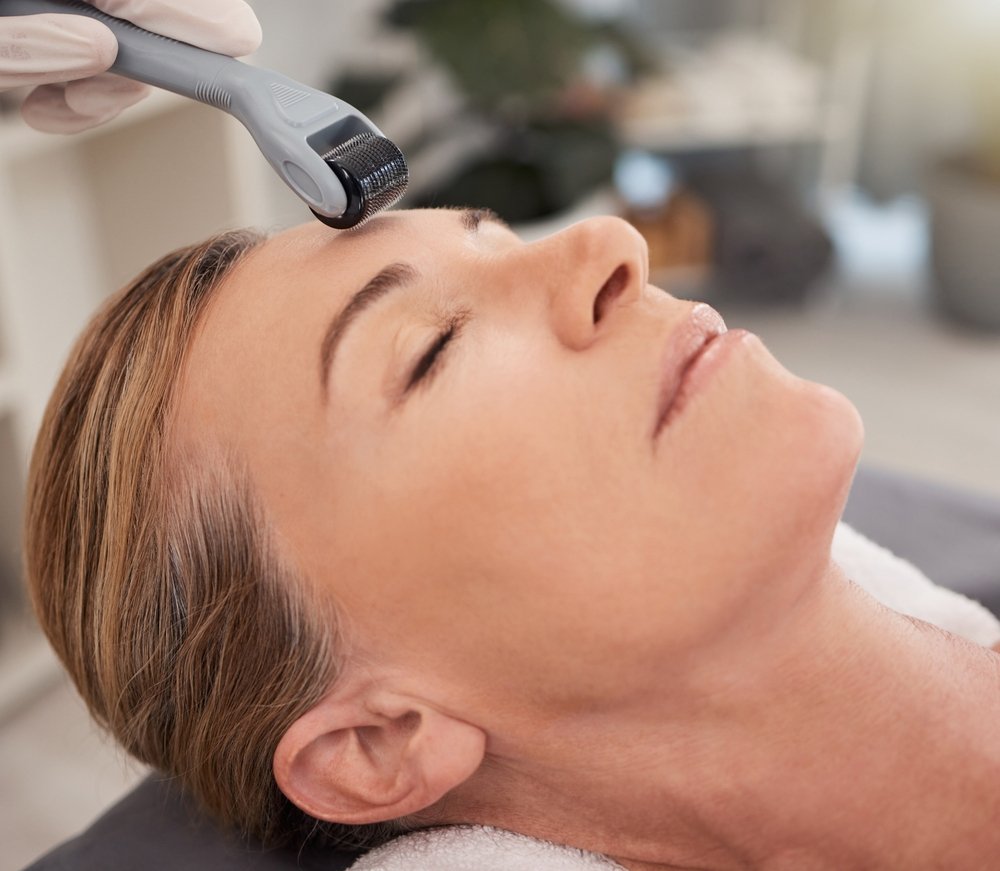The Ultimate Guide to Derma Roller Treatment
Derma roller treatment, also known as microneedling, is a popular cosmetic procedure designed to rejuvenate the skin, reduce acne scars, wrinkles, and promote hair growth. This comprehensive guide covers everything you need to know about derma roller treatment, from its benefits to post-treatment care, ensuring optimal results.
What is Derma Roller Treatment?
Derma roller treatment involves the use of a handheld device with tiny needles that puncture the skin to create micro-injuries. These controlled micro-injuries stimulate the skin’s natural healing process, encouraging the production of collagen and elastin. This process helps improve skin texture, reduce fine lines, wrinkles, and even fade acne scars. When used on the scalp, derma rolling can promote hair regrowth by increasing blood circulation and nutrient supply to hair follicles.
Benefits of Derma Roller Treatment
Reduces Fine Lines and Wrinkles: By boosting collagen production, derma roller treatment helps to smooth out wrinkles and fine lines, giving you a more youthful appearance.
Minimizes Acne Scars: Microneedling is particularly effective for reducing acne scars. It promotes skin cell turnover, leading to smoother and more even-toned skin over time.
Improves Skin Texture: The treatment can help reduce enlarged pores, improve rough skin texture, and enhance overall skin elasticity.
Boosts Hair Growth: For individuals struggling with thinning hair or hair loss, derma rolling on the scalp can improve blood flow, stimulate hair follicles, and promote thicker hair growth.
Fades Stretch Marks: The same collagen-boosting effects that reduce scars and wrinkles also help to fade stretch marks, making the skin appear smoother.
Enhances Product Absorption: Microneedling creates micro-channels in the skin, allowing skincare products like serums and creams to penetrate deeper, increasing their effectiveness.
How to Use a Derma Roller at Home
While professional treatments are more effective, many people use derma rollers at home to achieve similar results. Here’s a step-by-step guide to using a derma roller at home:
Choose the Right Needle Size: For facial treatments, start with 0.25mm to 0.5mm needles. For acne scars and deeper wrinkles, 0.5mm to 1mm needles are ideal. For scalp treatments, use 0.5mm to 1.5mm needles.
Sanitize the Derma Roller: Before each use, soak the derma roller in 70% isopropyl alcohol for about 5-10 minutes to ensure it’s clean.
Cleanse Your Skin: Wash your face or scalp with a gentle cleanser to remove dirt, oil, and makeup. Dry thoroughly before proceeding.
Apply a Numbing Cream (Optional): If you’re using a derma roller with longer needles (0.5mm or more), applying a numbing cream can reduce discomfort.
Roll in Different Directions: Gently roll the derma roller over your skin in different directions: horizontally, vertically, and diagonally. Avoid excessive pressure to prevent skin damage.
Apply a Serum: After derma rolling, apply a serum rich in hyaluronic acid, peptides, or other active ingredients. This will help nourish the skin and maximize the treatment’s effectiveness.
Post-Treatment Care: Keep the skin moisturized and protected from the sun for the next few days. Use sunscreen with SPF 30 or higher to prevent irritation and hyperpigmentation.
Professional Derma Roller Treatments vs. At-Home Treatments
There are significant differences between professional derma roller treatments and at-home microneedling:
Depth of Treatment: Professional treatments use longer needles (up to 3mm) that can penetrate deeper into the skin, delivering more dramatic results. At-home devices usually come with needles that are 0.25mm to 1.5mm in length.
Results: While at-home treatments can offer noticeable improvements, professional treatments typically provide faster, more visible results.
Safety: Professional microneedling treatments are performed in a sterile environment by trained professionals, reducing the risk of infection or scarring. At-home treatments carry a higher risk of improper usage leading to complications.
Risks and Side Effects of Derma Roller Treatment
Although derma rolling is generally safe, there are some risks and side effects to be aware of:
Redness and Irritation: After treatment, it’s common for the skin to appear red and feel irritated. This typically subsides within a few hours to days.
Infection: If the derma roller is not properly sanitized, bacteria can enter the skin, leading to infections.
Hyperpigmentation: If used incorrectly, derma rolling can cause hyperpigmentation, especially in darker skin tones.
Scarring: Excessive pressure or overuse of the derma roller can result in scarring.
Breakouts: Individuals with active acne should avoid derma rolling, as it can spread bacteria and worsen breakouts.
Who Should Avoid Derma Roller Treatment?
Derma rolling is not suitable for everyone. You should avoid derma roller treatment if:
You have active acne, rosacea, or eczema.
You have a history of keloid scars or hyperpigmentation.
You are pregnant or breastfeeding.
You are undergoing radiation therapy or have certain skin conditions like psoriasis.
How Often Should You Use a Derma Roller?
The frequency of derma rolling depends on the needle size and your skin’s tolerance:
0.25mm Needles: Can be used every other day.
0.5mm Needles: Use 1-2 times a week.
1mm Needles: Use once a week or every two weeks.
1.5mm+ Needles: Only use once a month and under professional guidance.
Overusing the derma roller can lead to skin damage, so always follow a safe routine based on the needle size.
Derma roller treatment is an effective way to rejuvenate the skin, reduce wrinkles, treat acne scars, and even promote hair growth. Whether you choose to undergo professional microneedling treatments or use an at-home device, consistency and proper technique are key to achieving the best results. For Derma Roller Treatment in Gurgaon, it’s important to always sanitize your device, follow post-treatment care instructions, and consult a dermatologist if you have concerns about your skin condition before beginning treatment to ensure safe and effective results.
The Ultimate Guide to Derma Roller Treatment



